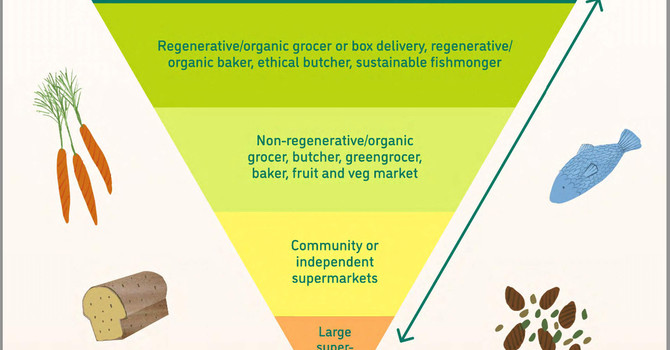
Written by our friends and Colleagues - Tiny Health Team
Summary
• Introduce allergens when beginning solids.
• If eczema or food allergy is a concern, you can introduce one allergen at a time.
• Keep the allergen routinely in your baby’s diet to avoid allergic reactions later in
childhood.
• Always consult with your baby’s healthcare provider for the safest way to
introduce allergens to your baby’s diet.
• Choose foods that also feed your baby’s microbiome. Tiny Health's baby gut
test can help identify imbalances and give you personalized recommendations to
help your baby avoid allergies later in life!
First things first, what is an allergic reaction in babies and what are the most common
types of food allergies? An allergic reaction in babies starts when the immune system
overreacts to a certain component in food.
The FDA created a list of the most common foods that can trigger an allergic
reaction [1].
These foods include:
1. Milk
2. Tree nuts (such as almonds and walnuts)
3. Eggs
4. Peanuts
5. Fish
6. Wheat
7. Shellfish
8. Soybeans
Introducing these foods can feel scary or daunting, but hopefully, we can put your mind
at ease and help you transition into solid foods feeling cool as a cucumber!
When to introduce allergens to baby
When can babies have peanut butter and other common allergens? Before introducing
any allergens, babies need to show signs of developmental readiness for introducing
solids. They should be able to hold their head steady, sit on their own, bring food to their
mouth, and swallow without spitting food out.
Start slow and when offering peanut butter and other common allergens that we listed
above, make sure your baby is already accepting other foods.
With that said, the early introduction of peanuts and their continued presence in the diet
can reduce peanut allergy later in childhood by 80% [2], [3]. In other words, we want to
start adding in food allergens as soon as safely possible.
If you’re wondering when babies can have peanut butter, the suggestion is as early as 4
- 6 months old to protect against peanut allergy.
The National Institute of Allergy and Infectious Diseases (NIAID) suggests [4]:
• Early peanut introduction at 4-6 months: Babies with a family history of
developing allergic reactions.
• Peanut introduction at 6 months: Babies with moderate eczema.
• No specific timeline: Babies without risk of allergic reactions. The introduction
can be more in line with family and cultural practices.
But these recommendations are not exclusive to peanut allergy. The early introduction
of grains and fish can also protect against respiratory allergies and eczema.
For example, research has found that:
• Introduction of wheat, rye, oats, or barley at 5 (or 5.5) months can help decrease
the risk of asthma and allergic rhinitis [5].
• Introduction of fish before 9 months may reduce the risk of allergic runny nose
and eczema [5].
It’s important that parents check with their healthcare provider before offering allergen-
containing foods to their baby.
If a baby already has an allergy or a family history of allergic reactions to food, it may be best to work with an allergist to establish thesafest way to approach common allergens [3], [6].
How do I know if my baby has a food allergy?
When your baby begins solids, you may want to track foods that can trigger an allergic
response. This way, you can quickly spot the allergenic trigger [7].
An allergic reaction to food can happen immediately or hours after offering your baby an
allergen.
When introducing solids, watch out for these food allergy symptoms:
• Immediate - 2 hours of eating food: Includes skin issues (hives, rash, flushed
skin) or respiratory symptoms (coughing or wheezing, difficulty breathing) [1].
Cow’s milk, soy, and egg are the most common triggers.
• Within 1 - 4 hours of eating food: Digestive troubles, such as diarrhea or
repetitive vomiting [1].
The Centers for Disease Control and Prevention (CDC) recommend introducing one
single-ingredient food at a time and observing any reactions for three to five days
afterward [8].However, this means your baby would take in only five to ten new foods a month, which
limits food exposure in a big way. We also know that offering a variety of food during the
first year helps to avoid picky eating [9].
Considering this, you may want to apply the CDC’s three to five-day rule to allergens
only. Work with your pediatrician to come up with the best plan for your baby’s needs.
What can I do if my baby has been diagnosed with a food allergy?
One of the most common allergies in babies is cow’s milk protein allergy or CMPA. This
condition can affect between 2% and 7.5% of kids under the age of 12 months old [10],
[11].
If your baby has been diagnosed with CMPA, it’s best that they avoid cow’s milk and
other dairy products such as:
• Milk from other animals such as sheep or goat [12], [13]
• Soy-based milk [12], [13]
• Lactose-free milk, since it will still carry the milk protein [14]
But don’t worry. Often CMPA isn’t a forever thing.
Research has shown that close to half of children diagnosed with CMPA will eventually
outgrow milk allergy during childhood [15].
This means that you can reintroduce cow’s milk at some point during your baby’s
development.
However, in this case, it’s best to do it under the supervision of your pediatrician.
The safest alternatives for a baby diagnosed with CMPA [14] are:
• Breastmilk (from someone that’s avoiding milk, dairy, and soy)
• CMPA-formula (recommended by your pediatrician)
• Fortified pea protein milk
• Oat milk
If you decide to feed your baby plant-based milk or dairy products, check with your
healthcare provider to identify the best option for your baby’s nutritional needs.
The Bottom Line: Food allergies and the microbiome
Food allergies in babies have seen a sharp increase in the last decade especially.
In fact, in 2018, 5.6 million children in the US were reported to have food allergies, with
peanut allergies being the most common [16].Studies suggest that food allergies are a mix of genetic factors, diet, and baby gut
health.
A baby’s gut microbiome development starts at birth and plays an important role in
overall health. For example, changes in the baby gut microbiome—the bacteria that live
in the gut—have been found in those with different types of food allergies.
This is one reason that the Tiny Health baby gut test looks for biomarkers linked to food
allergy development and personalized recommendations to help you support your
baby’s gut health and decrease their risk of food allergies and other chronic conditions
in the future.
Medically reviewed by
Joel Warsh, MD
Last updated on
August 20, 2024
References
[1] C. for F. S. and A. Nutrition, “Food Allergies: What You Need to Know,” FDA, Jul. 2022, https://
www.fda.gov/food/buy-store-serve-safe-food/food-allergies-what-you-need-know
[2] G. Du Toit et al., “Randomized Trial of Peanut Consumption in Infants at Risk for Peanut Allergy,” N.
Engl. J. Med., vol. 372, no. 9, Art. no. 9, Feb. 2015, doi: 10.1056/NEJMoa1414850.
[3] O. of the Commissioner, “Statement from FDA Commissioner Scott Gottlieb, M.D., on a new qualified
health claim advising that early introduction of peanuts to certain high-risk infants may reduce risk of
peanut allergy,” FDA, Apr. 26, 2022. https://www.fda.gov/news-events/press-announcements/statement-
fda-commissioner-scott-gottlieb-md-new-qualified-health-claim-advising-early-introduction.
[4] A. Togias et al., “Addendum guidelines for the prevention of peanut allergy in the United States: Report
of the National Institute of Allergy and Infectious Diseases–sponsored expert panel,” World Allergy Organ.
J., vol. 10, no. 1, Art. no. 1, 2017, doi: 10.1186/s40413-016-0137-9.
[5] B. I. Nwaru et al., “Age at the introduction of solid foods during the first year and allergic sensitization
at age 5 years,” Pediatrics, vol. 125, no. 1, Art. no. 1, Jan. 2010, doi: 10.1542/peds.2009-0813.
[6] C. for F. S. and A. Nutrition, “Health Claim Notification for Introduction of Allergenic Foods to Infants
and Reduced Risk of Developing Food Allergy,” FDA, Mar. 2022, https://www.fda.gov/food/food-labeling-
nutrition/health-claim-notification-introduction-allergenic-foods-infants-and-reduced-risk-developing-food
[7] “Food allergies in babies and young children,” nhs.uk, Dec. 07, 2020. https://www.nhs.uk/conditions/
baby/weaning-and-feeding/food-allergies-in-babies-and-young-children/
[8] CDC, “CDC’s Infant and Toddler Nutrition website,” Centers for Disease Control and Prevention, Dec.
11, 2020. https://www.cdc.gov/nutrition/infantandtoddlernutrition/index.html
[9] C. A. Forestell, “Flavor Perception and Preference Development in Human Infants,” Ann. Nutr. Metab.,
vol. 70 Suppl 3, pp. 17–25, 2017, doi: 10.1159/000478759.
[10] “When Might My Child Outgrow His Milk Allergy?,” Verywell Health. https://www.verywellhealth.com/
when-might-my-child-outgrow-his-milk-allergy-82843
[11] S. Ludman, N. Shah, and A. T. Fox, “Managing cows’ milk allergy in children,” BMJ, vol. 347, no.
sep16 1, pp. f5424–f5424, Sep. 2013, doi: 10.1136/bmj.f5424.
[12] “GiKids - Cow’s Milk Protein Allergy,” GiKids. https://gikids.org/digestive-topics/cows-milk-protein-
allergy/
[13] “Food Allergies and Cross-Reactivity.” https://www.kidswithfoodallergies.org/food-allergies-and-cross-
reactivity.aspx
[14] “Introducing Allergens to Baby,” Solid Starts. https://solidstarts.com/starting-solids/allergies/
introducing-food-allergens-to-babies/
[15] R. A. Wood et al., “The natural history of milk allergy in an observational cohort,” J. Allergy Clin.
Immunol., vol. 131, no. 3, pp. 805-812.e4, Mar. 2013, doi: 10.1016/j.jaci.2012.10.060.


